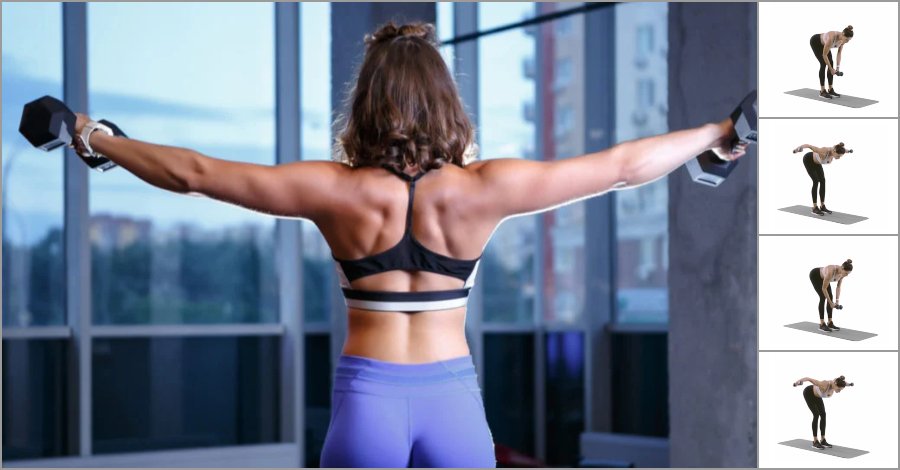The best dumbbell shoulder workout includes more than just the typical overhead press—it also includes moves that work the sides and back of your shoulders, too. n order to keep your joints stable, you need strength in all of the muscles that surround them.
That’s why it’s important to train both the front of your body (with “pushing” movements, like in chest workouts) and the back of your body (with “pulling” movements, like in back workouts). Super setting allows you to pre-exhaust specific heads of the deltoid with the first exercise, thus allowing you to recruit another area of the deltoid while using less weight.

Ready to get started? Here’s what you need for an amazing at-home shoulder workout with just six exercises.
Superset 1:
Seated Dumbbell Shoulder Press:

How to:
- Sit on the end of a bench with a short back with your feet flat on the floor and hold a set of dumbbells at your shoulders, palms forward.
- Press the weights up to full extension, then lower halfway back down.
- Extend all the way to the top once more and then back to the start to complete one repetition.
Seated Up and Out:

How to:
- Swap your dumbbells for a lighter set and hold them at your sides with your palms facing inward.
- Lift the dumbbells straight up in front of you to shoulder height, then flip your palms downward and open your arms to the sides so you make a T.
- Lower them back to the start to complete one rep.
Super setting Tip: Make the transition between the eccentric and concentric phase of the press controlled and calculated, and when doing the up and outs, make each move smooth and specific.
Superset 2:
Standing Dumbbell Side Lateral Raise:

How to:
- Stand with your feet hip-width apart spaced evenly on the center of a resistance band (not shown).
- Hold your heaviest set of dumbbells at your sides with your palms facing inward; place the other two dumbbell sets within easy reach.
- Lift your arms up and out to the sides, keeping a slight bend in your elbows and raising them to shoulder height and turning your pinkie upward as you reach the top.
- Pause briefly before lowering slowly back to the start for a count of two.
- Do all your reps, then place the weights on the floor.
Side Lateral Band Raise:

How to:
- Grasp the band handles and hold them at your sides, elbows slightly bent, palms facing inward.
- Lift the handles all the way to shoulder height, then raise and lower them exclusively in the top three-fourths of your range of motion using a fast tempo for reps.
Super setting Tip: To increase your time-under-tension, use an ever-increasing ratio of eccentric to concentric motion for the standing dumbbell side lateral raises: Start with a 1:2 ratio for set one, a 1:3 ratio for set two and a 1:4 ratio for set three. The side lateral band raises act as a burnout, finishing off your fast-twitch fibers and creating a burn that should melt your Lulu’s.
Superset 3:
Seated Bent-Over Dumbbell Rear Delt Raise:

How to:
- Sit on the end of the bench and hold a set of dumbbells in your hands, palms facing inward.
- Hinge at the hip and fold forward until your chest is resting on your legs and your arms are perpendicular to the floor, elbows slightly bent, head neutral.
- Lift your arms up and out to the sides, raising for a count of two until your upper arm is parallel to the ground.
- Lower the weights slowly for a count of three and repeat for reps.
Seated Dumbbell Upright Pull/Press Combo:

How to:
- Trade up to a heavier set of dumbbells and sit upright on the bench with the dumbbells at your sides, palms facing inward.
- Drive your elbows skyward until the dumbbells come to shoulder height.
- Then quickly pivot your arms in the sockets and flip the weights up to come into the bottom of a shoulder press.
- Then extend your arms completely, lower back down, pivot your arms again into the pull and lower to the start to complete one rep.
Super setting Tip: To ensure you hit the rear delts for the raise, lock your shoulder blades down into your back and keep your hands in your peripheral vision at all times. When transitioning from the upright pull to the overhead press, make your transition quick but smooth. Rotator-cuff muscles + jerky motions = possible injury.

